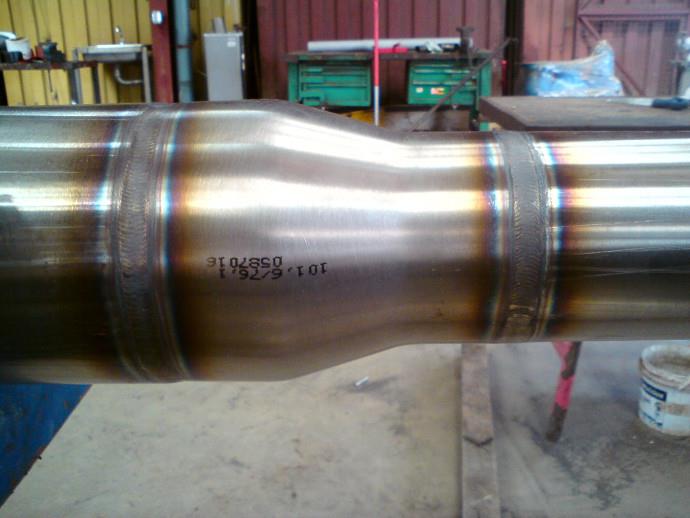Welding stainless steel with argon, the nuances of technology-Stainless Steel – is high alloy steel, which has anti-corrosion properties. In its composition includes a large content of chromium (20%), which acts as an alloying element, and other elements whose function is to increase the resistance of steel to corrosion and to give it particular physical properties – such elements are nickel, manganese, molybdenum and titanium. The result is a metal having high strength, which can be used in all weather conditions. Not surprisingly, the stainless steel is used in almost all industries – from construction to food, and to see the products of this metal can be everywhere.
The special properties of stainless steel and require the development of special technology of its processing. And one of these methods was the welding of stainless steel with argon, which allows to achieve excellent quality weld without damaging the appearance of the product – in fact, talking about the characteristics of stainless steel, many consumers are among the first called handsome “exterior” wood products.
It should be noted that the welding of stainless steel – it’s not a very easy task, and beginners who have no experience of welding, with it unlikely deal. In order to achieve a really reliable, durable and accurate weld requires confident enough to have the skills of a welded case.
Features stainless steel welding
The main problem that can occur in a welder at work with stainless steel products – is that the metal when working with it can easily be cracked. In addition, stainless steel welding with argon and difficult because of other special properties possessed by this material.
Low thermal conductivity of stainless steel – stainless steel for this parameter is different from the low-carbon steel by almost 2 times. This means that during the welding temperature in the heating zone reaches higher values, and the risk of “boil” metal through very large. In order to avoid this when using stainless steel is selected lower current than usual when welding steels – the difference may reach 20%.
Increased linear expansion, and as a consequence, high casting shrinkage. These two factors greatly increase the risk of deformation of the metal during welding operations – until the appearance of cracks in welded products. In order to avoid this, it is necessary to create a sufficient gap between the elements undergoing welding, particularly if the thickness of steel is quite high.
The increased electrical resistance. This property causes the stainless steel that the electrode is made of a high alloy steel becomes too hot during operation, which adversely affects the quality of welding. Minimize the negative consequences of use helps to weld stainless steel truncated electrodes (their length does not exceed 350 mm).
When welding stainless steel products must also be considered another property of this metal – if you select the wrong temperature welding it may lose its anti-corrosive qualities. When the metal is heated to a temperature above 500 degrees C at its edges form chromium carbide and iron carbide – and it is in their location on the product of stainless steel corrosion may occur. To exclude this possibility, in stainless steel welding technology includes the step of rapidly cooling metal. This is done in different ways, including using a water-irrigating product.
Stainless steel welding technology argon
TIG welding of stainless steel products, both manual and semi-automatic, is the primary method of treatment of the metal. Protection zone and electrode welding with argon overcomes many of the difficulties arising in the process of welding. Very often, this method is applied in the case when it comes to welding of thin steel, and the quality of work are increased requirements – for example, this applies to the welding of thin-walled stainless steel tubes that make up the pipeline.
In this case, special care is necessary in choosing a filler material – the filler wire, for example, should have a doping level greater than that of the metal from which to accomplish the welding products, and the electrodes must be tungsten.
The edges of the elements to be welded are prepared to work in the same way as the edge of the other metal products – they must first surface abraded with a steel brush until light and then degreased using for this purpose, for example, acetone. But there is one feature here and – as mentioned, stainless steel has high rates of expansion and shrinkage, so you need to leave between the edges of the elements of a certain gap, which does not allow metal cracked shrinkage.
And another recommendation, which must be followed to obtain the weld quality – electrode should move smoothly, oscillate from side to side in this case are not allowed, as this may lead to the fact that the protection of argon welding zone is violated, and the welded seam appears oxide film.
Welding stainless steel with argon
- genie garage door opener parts
- As I Conclude a deal with a partner in management
- Causes of freezing moisture and walls in winter
- Sell your annuity questions and answers
- How is the electricity meter and how to cheat
- Effectively reseal a crack on a wall plaster
- frameless sliding glass partitions
- Installing A Kitchen Sink Reviews
- What is leasing the car and its features
- Good doors and Gates is a guarantee of your safety

